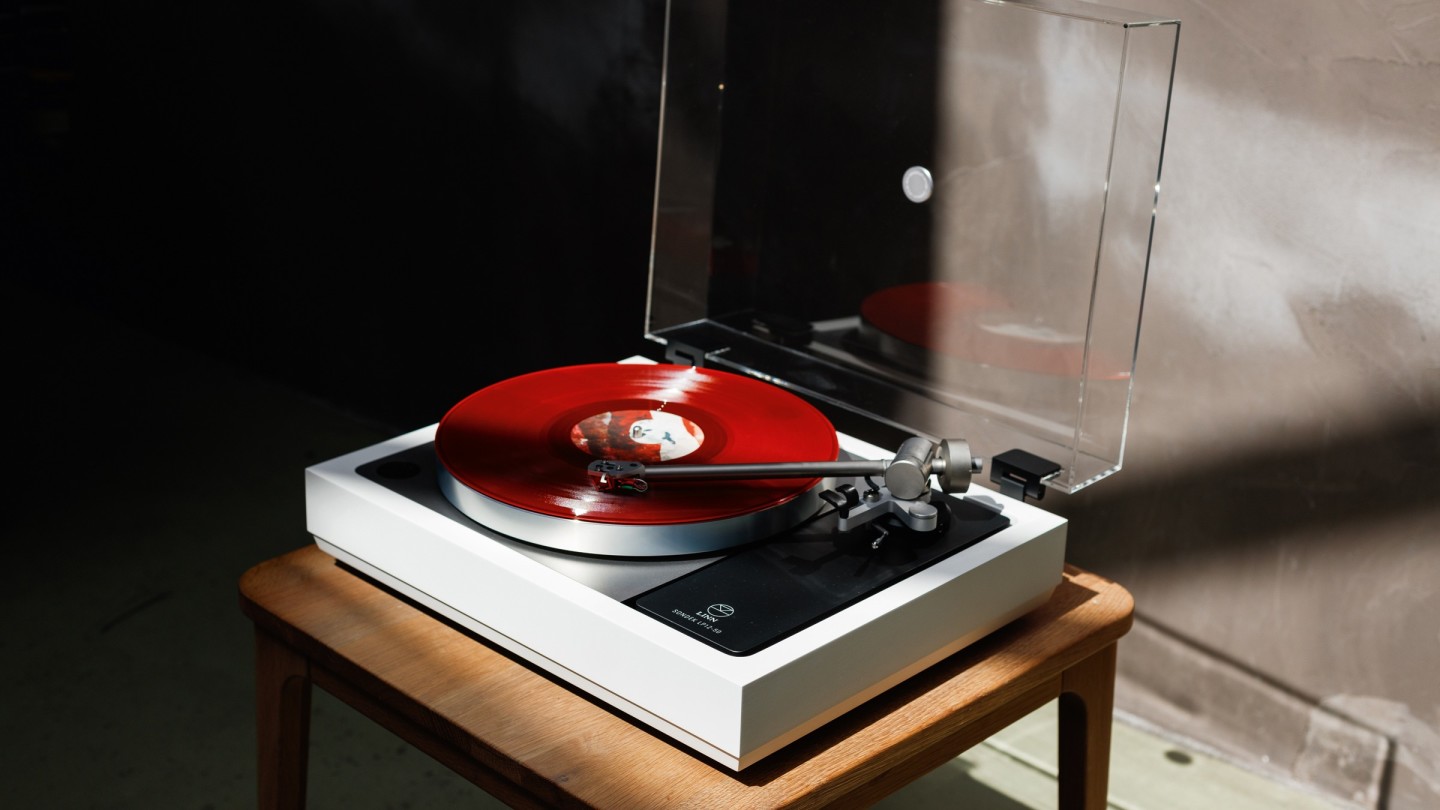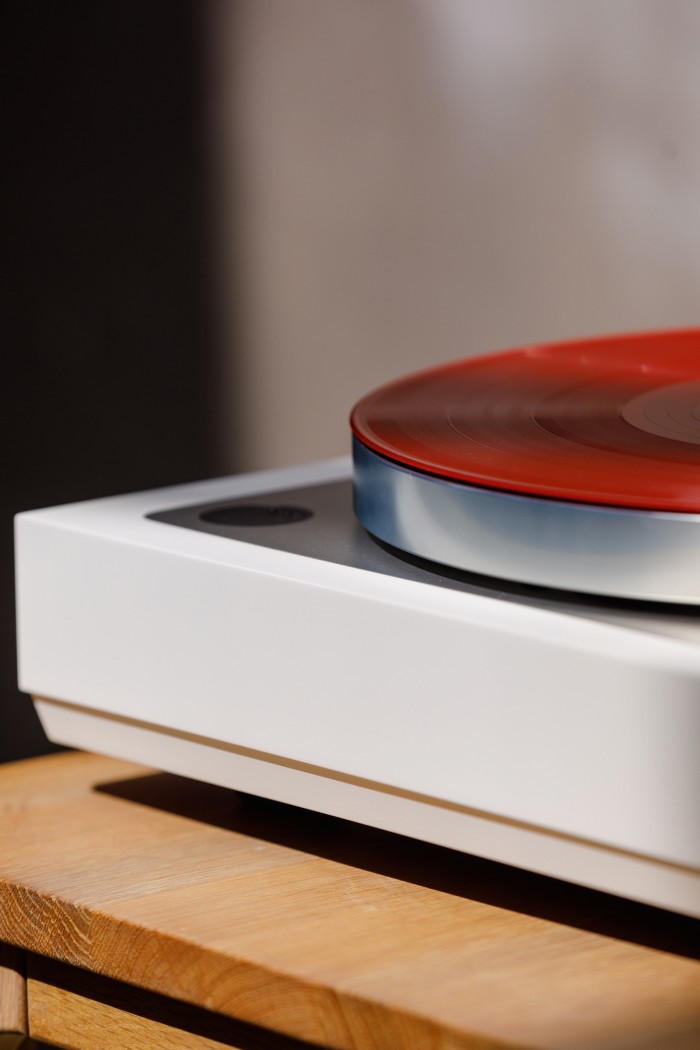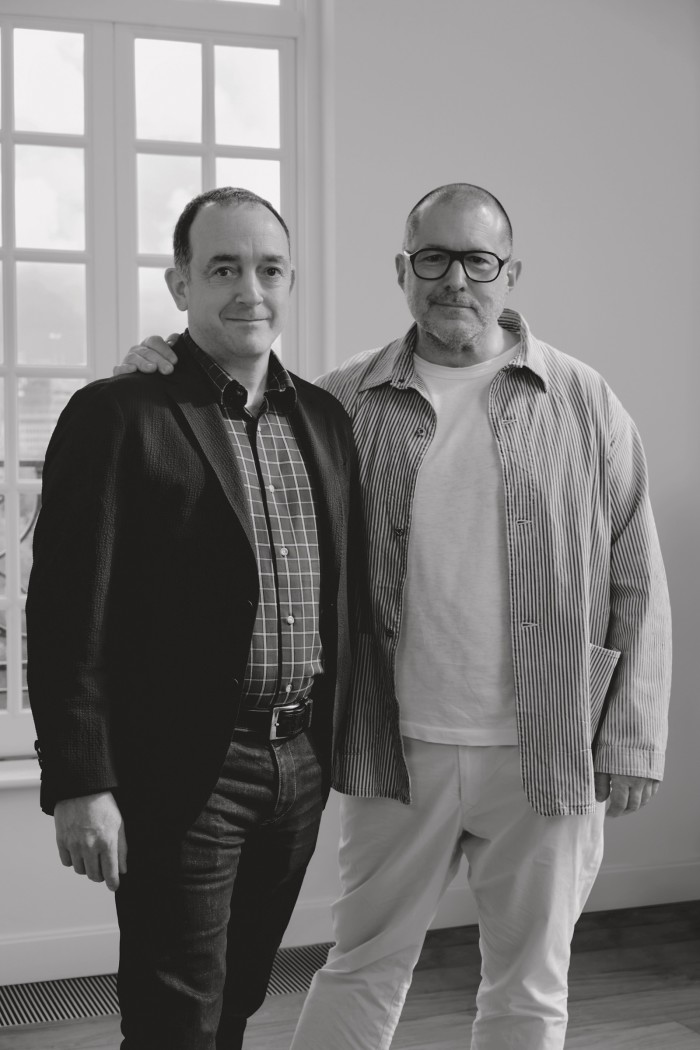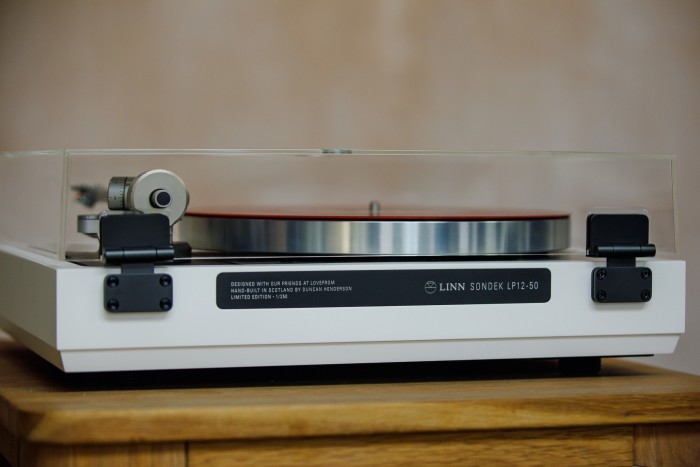If Jony Ive made record players...

Roula Khalaf, Editor of the FT, selects her favourite stories in this weekly newsletter.
A 21st-century maxim: if you receive a message on social media that seems too good to be true, it’s probably spam. You certainly wouldn’t blame Gilad Tiefenbrun, head of Scottish audio firm Linn, for deleting a LinkedIn request that purported to come from Sir Jony Ive, designer of the iPod, iMac, iPhone and iPad. “But a few hours later I thought, ‘Hang on, what if it is him?’” says Tiefenbrun. “And it was. It really was.”
Ive’s overture stemmed from a long-standing interest in the company that began in his student days in the ’80s. Linn’s Sondek LP12 turntable, launched in 1973, had become globally renowned for the clarity of its audio reproduction and its exemplary design (by Tiefenbrun’s father, Ivor.) “Obviously at that time I couldn’t afford to own one,” says Ive. “But I loved everything about Linn’s philosophy – so focused and so purposeful. That obsession translated to the products they made, their tools and their process.”
Tiefenbrun’s fishing the LinkedIn request out of the trash would ultimately precipitate a partnership with Ive’s creative collective, LoveFrom. That has now resulted in the Sondek LP12-50, in a limited edition of 250, to celebrate the turntable’s 50th anniversary. A number of sonic improvements by Linn coupled with Ive’s attention to fine detail have yielded an object that both men feel rather emotional about. “This collaboration is one of the things I’m proudest of in my career,” says Tiefenbrun. “I feel so fortunate to be able to have done this,” echoes Ive. “Just the joy of being able to work with remarkable people on a peerless icon.”

While the peerlessness of the LP12 is broadly agreed upon, the reasons for it are not. Audiophiles talk about the “pace, rhythm and timing” the LP12 supposedly bestows upon music, but Tiefenbrun refutes what he calls “magic dust”. “You’ve got the recording, which to all intents and purposes is perfect,” he says. “Hi-fi systems generally make that recording worse, because they put bits of tech in the way of what you want to hear. But we just strive to eliminate noise and distortion from the signal path. Over the years we’ve made thousands of improvements.”
The uniquely modular design of the LP12 has meant that any owner could take advantage of those improvements at any time by buying retrofittable upgrade kits. But over the years it has also attracted enthusiastic engineers who could see how their own suggestions might be incorporated into the product. That welcoming of ideas into an egalitarian, non-hierarchical organisation is reflected in Richard Rogers’s design of the Linn factory, just south of Glasgow. Defined by its open spaces and absence of corridors, it was envisaged as a place where people, ideas and material could flow freely. When Ive visited the factory in the late ’80s, it left a deep impression.

“It was a fantastic place,” he says. “As a designer I’ve always felt it’s important to be close to where you make things, and [at Linn] I could see all the manufacturing equipment, all the research and development equipment… I remember thinking how cohesive everything was.” Tiefenbrun notes that keeping that ethos going for 50 years and flatly refusing to outsource has required a great deal of swimming against the tide. “It takes a huge amount of financial commitment, but my dad’s line is that people are mortal but companies can be immortal. So we build the company for the long term. And the connection with Jony came precisely because of our commitment to that stuff.”
The new LP12-50 sits on a new, Linn-designed plinth, machined from highly compressed layers of beech, with sonic properties Tiefenbrun describes as “phenomenal”. Gone is the traditional rocker switch for power and speed control, and instead there’s a solid aluminium button, flush with the top plate. The hinges, also machined from aluminium, forgo typical dust-cover behaviour (ie, locked in the up position, or shut) and keep it at the angle you desire. The switch, the hinge and other subtle aesthetic changes have been beautifully conceived by LoveFrom, but came with a side-order of anxiety.

“I don’t think Gilad would have let us close unless he thought there was the appropriate amount of terror and trepidation,” laughs Ive. “The original design is beautiful, appropriate and mindful of its function, and you have to have an incredible deference. But that deference needs to be judicious and thoughtful. We can mistakenly assign a reverence to things just because they’ve been around for a number of years.”
Ive’s proposition that the new turntable also be made available in a white finish was perhaps his boldest suggestion, and the one that caused most nervousness at Linn. “I preferred the natural [wooden] finish – but by the end, we were both keen on both,” says Tiefenbrun. “LoveFrom have been so respectful, almost paranoid, about doing anything that would adversely affect the acoustic performance [of the product] or offend the Linn community.”
Ive, designer of multiple digital music players, now owns the LP12 he once yearned for. “The iPod helped me rediscover a catalogue of music, but it couldn’t be more different from an analogue vinyl player,” he says. “Since getting the LP12, I’ve noticed that I’ve been getting up earlier in the morning to play vinyl as I’ve been getting ready for the day. As somebody who’s passionate about music, it’s been such an interesting journey for me.”
Comments